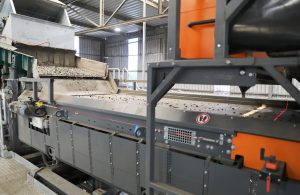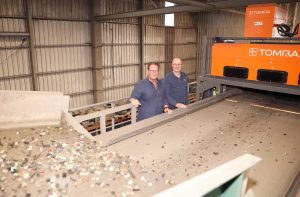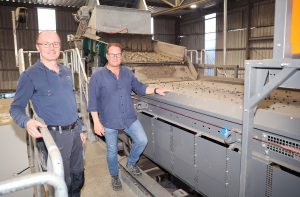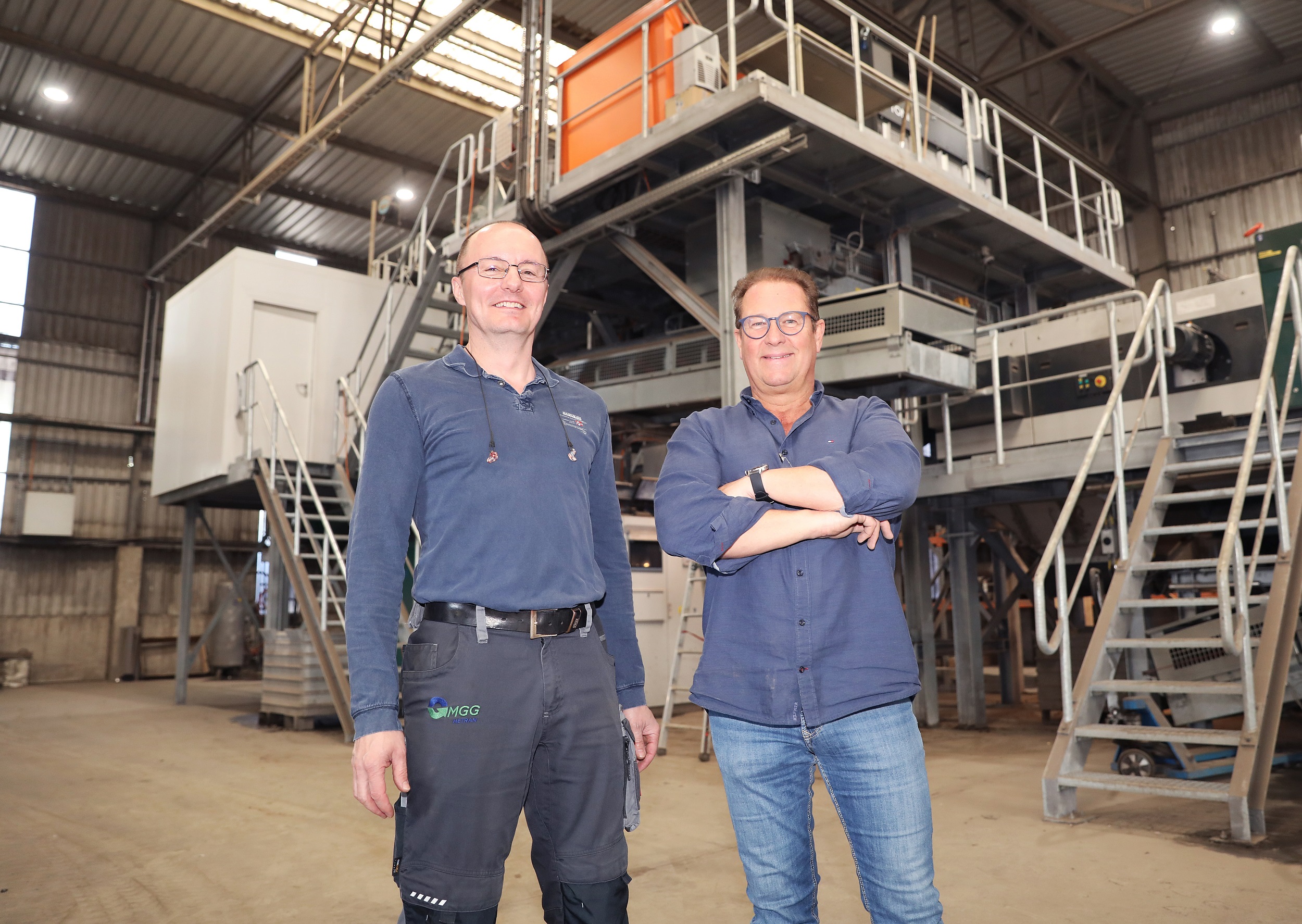Last year, about 1.5 million euros were invested in a plant that takes the separation of mixed materials at MGG Metran in Kematen to a new level – the new Polyfinder plant. Innovative technology with a combined analysis process opens up completely new possibilities in the separation of materials.
In December last year, the Polyfinder system was integrated into the day-to-day work at MGG Metran in Kematen after a nine-month construction and test phase. „Corona did not make the installation easy for us, but we are happy to finally be able to use the plant, despite a delay of about four months,“ says Metran managing director Gunther Panowitz.
day-to-day work at MGG Metran in Kematen after a nine-month construction and test phase. „Corona did not make the installation easy for us, but we are happy to finally be able to use the plant, despite a delay of about four months,“ says Metran managing director Gunther Panowitz.
What is a Polyfinder separation plant? And: How does it work? The term „poly“ comes from the Greek and means „many“. So „many“ processes – in this case four – are used simultaneously to optimise the separation process of the waste stream. „It’s a further development in which you combine various known detection technologies in one system,“ Panowitz sums it up.
Method 1: Colour sorting
The first technology is the well-tried colour sorting with light and a high-resolution digital camera. This is a process that MGG Metran has been using successfully since 1996. For example, red parts are recognised as copper, yellow as brass or dull grey as zinc. However, due to the diversity of material contents in the waste, this method quickly reaches its limits. For example, when it comes to chromium-plated brass. But there are also many possibilities for confusion. In the past, printed circuit boards were always green, but today they have a wide variety of colours, such as yellow, blue or red, and can therefore no longer be clearly assigned purely on the basis of the colour analysis. And so it can happen that printed circuit boards have the same colour as beer cans, for example. The blue of the beer brand „Puntigamer“ is very similar to the blue of a circuit board. This makes it much more difficult to separate them by type.
Method 2: Near-infrared camera
In the second step, the waste pieces, which are about the size of a fingernail, pass through the NIR camera, the near-infrared camera. In this process, heat radiation is used. Using the example of the blue beer can and the blue circuit board, a difference can be „seen“ immediately in the infrared range. While the optical digital camera sees two identical shades of blue and detects no difference, the beer can provides no feedback in the infrared spectrum because it is made of metal. The blue circuit board, on the other hand, is recognised as plastic because it provides a certain typical deflection in the infrared spectrum. Thus, the circuit board can be identified as plastic.
 Method 3: Laser Object Detection
Method 3: Laser Object Detection
In the third step, the so-called LOD, Laser Object Detection, is used for analysis. On the 1.80 metre wide conveyor belt, the parts are transported at a speed of about four metres per second. In the third analysis method, LOD, a laser aims at the belt from above. In combination with another low-resolution camera (visible camera – VIS for short), which is located at the side of the conveyor belt, all parts are scanned. The deflected laser now tells us where the parts are on the conveyor belt, how long they are and how high they are. „In this way, a virtual three-dimensional image of each part is drawn, so to speak,“ Panowitz explains. This also applies to black parts, which could not be analysed with the first two methods. In addition, the system calculates the approximate centre of gravity of the part through the three-dimensional shape and estimates the weight. This is important at the end of the belt when it comes to „scrap“ and influences how much compressed air is needed to deflect the corresponding part into the correct channel.
Method 4: Electromagnetic camera
The last step involves an electromagnetic camera (EMC for short). Magnetic fields are generated by coils arranged transversely in the last half metre below the conveyor belt. These electromagnetic fields radiate through the conveyor belt and thus hit the parts conveyed above. These parts, in turn, change the frequency and strength of the respective coil in a material-characteristic way. Ferrous materials, for example, change the coil frequency very strongly. In comparison, a copper part influences the frequency less and a plastic or mineral part does not change the electromagnetic field at all. For example, all metals can be sorted out from a waste stream.
By combining these four methods, many different substances can be analysed that would be difficult to detect singly with the individual methods. Would you like an example? A black plastic part could not be properly classified with the first two methods. But with LOD, the part is spatially registered and does not emit an electromagnetic pulse in the fourth step. Thus, it can be clearly determined that it is black plastic.
Now perfection is on the agenda
Because of the different waste fractions, the Polyfinder system can achieve a wide variety of separation results. At the end of each run, this new plant offers the possibility of separating four different material streams. Depending on the composition of the primary waste stream and the separation requirements configured at the plant, a wide variety of separations are carried out.
After commissioning the plant, which was supplied by the German company Tomra and supplemented by the local plant manufacturer IFE in Waidhofen/Ybbs, the next step is fine-tuning, as Panowitz explains: „We learn over time. By perfecting the settings and programming, as well as through cooperation with the manufacturer, we can continuously improve the quality of the results.“ The goal is to become even more effective in the future by means of artificial intelligence: „At the moment, we set the parameters and, depending on how we programme the system, appropriate material streams are sorted out. However, this setting and programming work is very time-consuming and our technicians are learning every day. Hopefully we will manage to have this learning process taken over by the EDP system in the future and the quality improvements will be carried out independently with computer support, so to speak,“ says the MGG Metran managing director, looking to the future with confidence.
Perceiving waste as a raw material
Generally speaking, the requirements in recycling are changing almost daily. „We are moving more and more in the direction of increasing quality, recycling depths and the detection and separation of more and more new materials, as our hard plastic project – keyword Bobby-Car – has also shown us.“ But the Metran boss is also concerned with a socio-political aspect. After all, every Austrian citizen generates around 500 kilogrammes of waste per year. For Panowitz, however, this is not waste, but valuable materials: „We must learn not to underestimate these resources, but to see them as raw materials. In people’s minds, waste must not be „ugh“, but we must be more aware of the value of the processed materials at the end of the respective product life cycle! Today we have the technology to keep materials in the cycle. And with appropriate separation processes like our new Polyfinder plant, this circular economy is getting better every day!“

